Continuity for Film and Television Twu 1998
Sometimes facts can be embargoed not in a straightforward method, but continuously, being obscured by interpretations that are becoming more sacred. Until a fictitious fact emerges that obscures everything that is seen and felt. That is the reality of our lives surrounded by myths, by hidden meanings that are finally validated together.
It is like quietly and slowly creeping into our days. The path that myths take can be from anywhere, such as from geographic expanses to the collective narrative of empirical experience. Almost all aspects of life intersect with this myth. Then, it does not stop at one human child, the myth spills over to a wider context such as in culture and social institutions. Its presence not only hides behind the skull but comes out also in the form of practical actions, through various mediums.

One of them is a movie. This live image is considered as a medium that is able to create reality, along with its wide reach. However, what then triggers further discussion is our perspective on the myth itself in cinema. Is it limited to the description of reality, or can it reach the level of real experience.
2021's Spektrum: Mythologising the Myth is also approaching the case, through two long documentaries and five short documentaries selected. Each work may have its own starting point to prove how the film makes myths really live, or if they die, they will wander in all directions. This is also an effort for the 2021 Festival Film Dokumentar (FFD) in tracing episodic memories for the past 20 years, which are not far from the realm of people's lives: social, economic, and cultural.
From there, we know that the production of a documentary is not just a recording of repeated speeches of an event or reality. Nor is it just a matter of technical beauty. More than that, the films subtly carry a strong message that can be so persuasive that they can even become something like propaganda. It also can be said that before it appeared, myth hid behind the creative process. When the facts have been shown and the messages have touched the audience, the sneaking myth appears as a guide for certain meanings through the language of cinema.
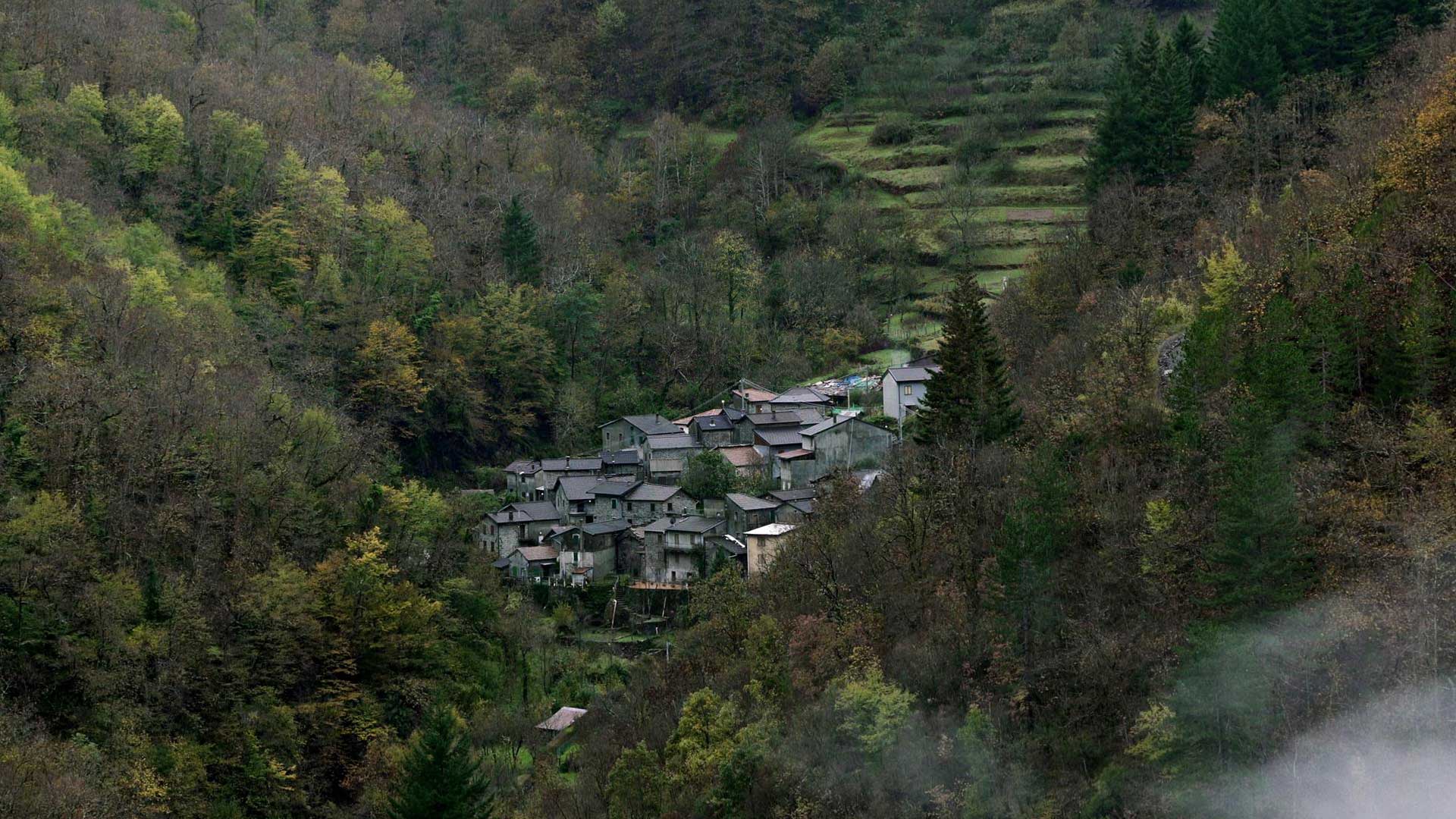
The films in this program tell the relationship of humans with myths from various landscapes. Just like Bosco (2020) and Red Moon Tide (2020) . The two feature films take the point of view of the proximity of myth to geographic space and cartography, namely the myth of the Bosco city and the story of mythological creatures and figures. It is also different from the short film Storgetnya (2020) which describes the practice of speleotherapy alternative medication by breathing air in a cave containing minerals and salt. Then Mada or the story of the first man (2021) , trying to juxtapose myth with new fiction in the realm of archeology. Moreover, Termimpi Maujun (2021) presents the relationship between the environment and the community through the context of dreams.
The documentary is one medium that captures a landscape of a phenomenon through camera perception. The phenomenon that is captured in a certain perspective affects the constructed narration so the documentary films may deliver critical narrations, in the aspects of social, politics, et cetera. If we take a closer look, there are some changes in the documentary language and speech from time to time. Those changes tell that the journey of the documentary film keeps growing all the time.
Those changes will be difficult to find if we do not look back at the past works. By looking back at past works, we are able to see interesting changes in various aspects of documentary films to be looked back and taken as references in the present.

Forum Film Dokumenter archives has summarized the ideas and speeches of Indonesian documentary filmmakers in their cultural complexity. Delivery of the narration and speeches is often based on the idea of continuity which affects other documentary filmmaking, especially to two decades of Festival Film Dokumenter (FFD). Two decades is absolutely a huge achievement. However, FFD would not have been here without the journey of documentary films from year to year. Therefore, FFD 2021 tries to invite the public to take a look back at documentary film archives through the program Lanskap 21: 2 Dekade Dokumenter.
Other reviews in 2 Dekade Dokumenter also become marks and reflections for the 20th FFD, in accordance with this year's FFD theme, Keberdayaan dan Kegigihan (Empowerment and Persistence). Documentary films enthusiasts should keep empowering and persisting to keep presenting quality documentary films that are able to capture every phenomenon in Indonesia.

Lanskap comes as an attempt to talk about the narration about and in Indonesia through documentary films. This program offers works reviewing through perspective in interpreting Indonesian documentary films while seeing Indonesia in the documentary films itself. Through Lanskap 21: 2 Dekade Dokumenter , FFD invites the public to ta works longer, which are presented by documentary films in 2 decades. 2 decades is a long time for the journey of documentary films, there are many things for them to look over.
The most dominant change is the pandemic, which brings changes in the production pattern, online film distribution, to platforms for watching films. This phenomenon is absolutely the biggest change in the documentary film environment. To survive, adaptation is needed. These changes can be found in the films presented by Lanskap 21: 2 Dekade Dokumenter.
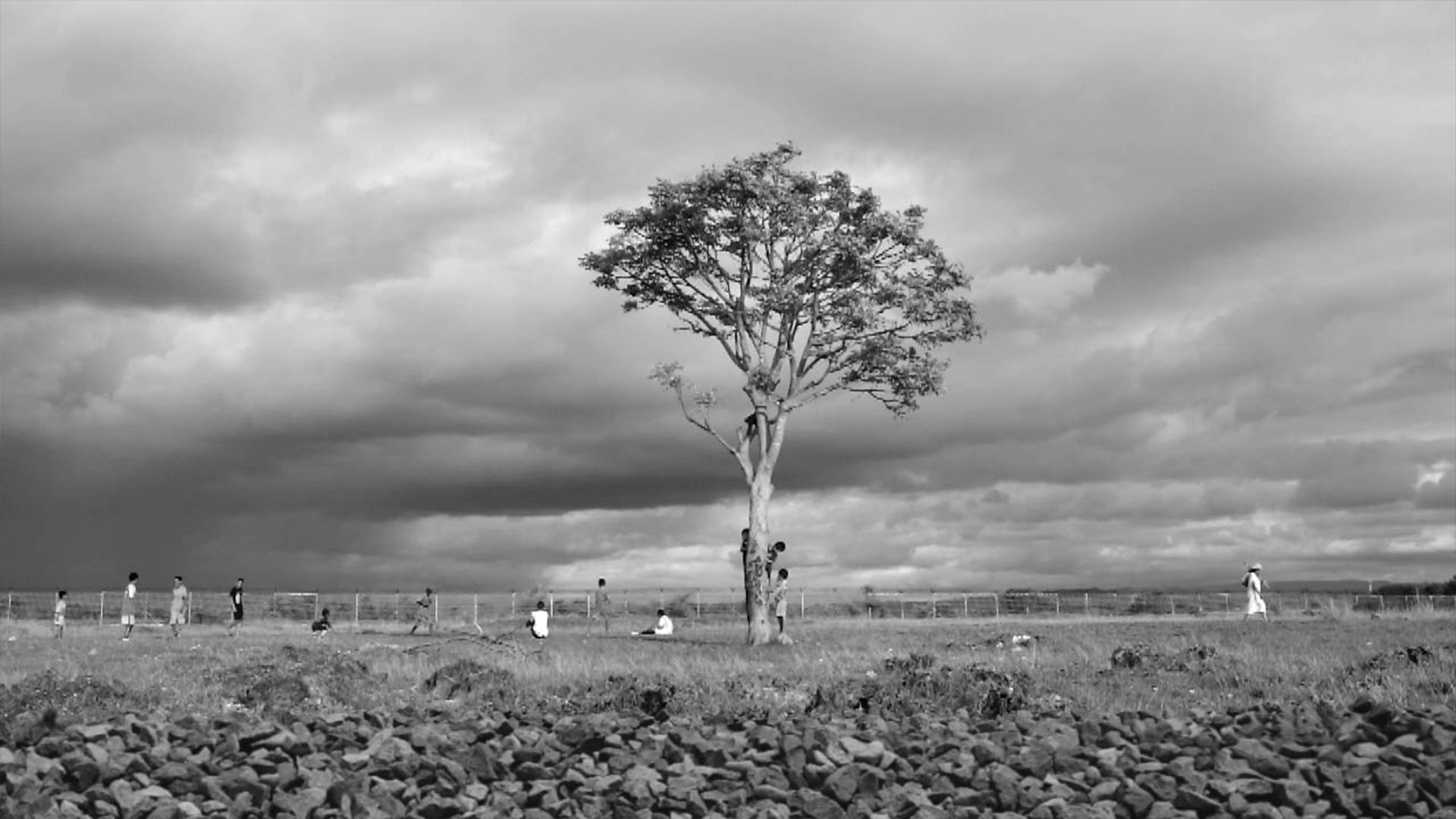
Through 400 Kata (400 words) (2013), Genre Sub Genre (2014), and Sepanjang Jalan Satu Arah (Along the One Way) (2016), the audience is invited to see the combination of documentary and fiction. The combination makes the border between genres invisible and united in those films.
Batu Bata Merah (2014), The Coffeemaker (2009), Diary of Cattle (2019), and Pabrik Dodol (2009) come to please the audience with visual storytelling to deliver the messages. Those three films succeeded in capturing phenomena visually aesthetic. Even though no dialogue is involved, those films are able to speak up and make people understand the films.
Still talking about visual aesthetics, documentary films also can be watched in the form of animation. The audience can enjoy animated documentaries in Begini lho, Ed! (2013) and kOsOng (Empty) (2020). Both are long feature documentaries, but the animated delivery does not bore the audience.

This year, Lanskap tries to create a more inclusive perspective and documentary imagination. The audience can learn from Farewell My School (2013) and Bunyi Banyu (2020). Both succeeded in delivering disabled subjects without making them feel as disabled.
Producing the film is using different approaches. memories/fortress (2020) succeeded in presenting a documentary film with an ethnographic approach. The filmmaker's background in ethnographic and documentary films are working together to make the approach a success.

Apart from the seriousness of documentary films, Gorila dari Gang Buntu (2009) and Dogod (2014) succeeded in presenting complex narrations in a refreshing way. Both can be a refreshment amongst serious documentary films.
Besides, the audience can also enjoy the differences and development of speech and language in delivering every issue and documentary films journey through Denok & Gareng (2012), Anak Sabiran, di Balik Cahaya Gemerlapan (Sang Arsip) (2013), Homo Homini Lupus (2008), Paotere (The Fish Market) (2009), Nyalon (2014), Akar (Roots) (2014), On the Origin of Fear (2017), and Salmiyah (2020).
Retrospektif program focuses on the journey of filmmakers and their contribution to documentary film in the world. This year, Retrospektif presents the experience of watching the amazing works of Chris Marker.
Who was Chris Marker? He was a writer, photographer, editor, filmmaker, videographer, and digital multimedia artist; Marker was one of the biggest secrets of the cinema world. He was not very sociable and was covered with aliases. But, the atmosphere of film festivals that has been growing makes his secrets revealed and consumable so he got admitted as one of the significant figures of contemporary visual culture.

Chris Marker encouraged the presence of essay film culture which explores how the shift of human perspective affects film production practices. Marker's works often picture times and events which have a reflective manner. The understanding of every approach in Marker's works stands on subjectivity and textuality. Polysemy that he used to question and deliver the complexity of history became a unique character of his cinematography.
Marker reflected the memory-building process by dialectic play and creative montage that involved the past by giving it purpose, not by cult history. Using replicated and timeless photographs, footage, or any other form of archives, Marker brought back memory and nostalgia. Through reflection on images, the works kept living and going around the world. Marker did not try to synchronize politics and arts. Instead, he brought both by keeping images that are questioned and resonated with this era over and over again.

Retrospektif presents 4 works of Chris Marker, consisting of 3 long feature films and 1 short film as an attempt to look back at Marker's work since his death 10 years ago. Lettre de Sibérie (1958) is his work in his early career. In the film, he takes us to witness the lives and culture in Siberia. Le Fond de L'air Est Rouge (1977) is his work that focuses on global politics in the 60s and 70s, especially the rise of the New Left in France and the growth of the socialist movement in South America. Then Sans Soleil (1982), tells the story of a woman who is reading contemplative writings of an experienced world traveler.
On October the 21st, 1967, more than 100.000 protesters gathered in Washington DC, trying to end the war in Vietnam. The gathering is the biggest protest gathering ever, which happened to unite various communities; the liberal, radical, hippies, and yippies. Chris was there, then La Sixième face du Pentagone (1968) was born.
Broken tiles will look like worthless gold. That is the meaning of the Javanese proverb "wingko katon kencana". This proverb can be used to describe someone who is intoxicated. Many things that are based on love will feel more beautiful, better, and more comfortable. The distance that is actually very far will feel closer, the weight will feel lighter, and difficult will feel easier. Apparently it is true that all work will feel more comfortable if it is based on love.
The world we live in is developing dynamically and no human being is able to control its speed. This development is now entering an era when the world seems to be immersed in capitalism. Many individuals and groups are distorted by this development and believe that humans can find their identity through work. Unfortunately, in the further development of capitalism, the variety of jobs actually alienates people and feels marginalized. Activities or jobs that have a foundation of love and affection often only result in minimal (financial) appreciation because they are deemed inconsistent with the social construction that has been formed. These statements often take the mind, time, energy, and emotions of the perpetrators. So, what motivates them to do their job with persistence and perseverance?

Through personal love that grows together with personal experiences and memories, small movements grow. Gradually the movement becomes a spirit that continues to live and support the person. From these personal experiences and memories, we can meet bigger problems that will continue to grow from the love that is already embedded. For example, a group of people who enjoy music or dance will choose to work in the performing arts field. Moreover, there are many types of household work, such as a family member who is responsible for a sick family member, or a mother who is responsible for her child; or vice versa, a child who is responsible for his parents. If you look deeper, there are also many individuals who are willing to put their energy, thought, time, cost, and feelings into finding their identity in the midst of the layers of personal conflict they experience. These work practices are often carried out by individuals or groups who are far from trying to meet the framework of capitalism.
If the capitalist age has failed to appreciate these occupations, how can we interpret this work further?
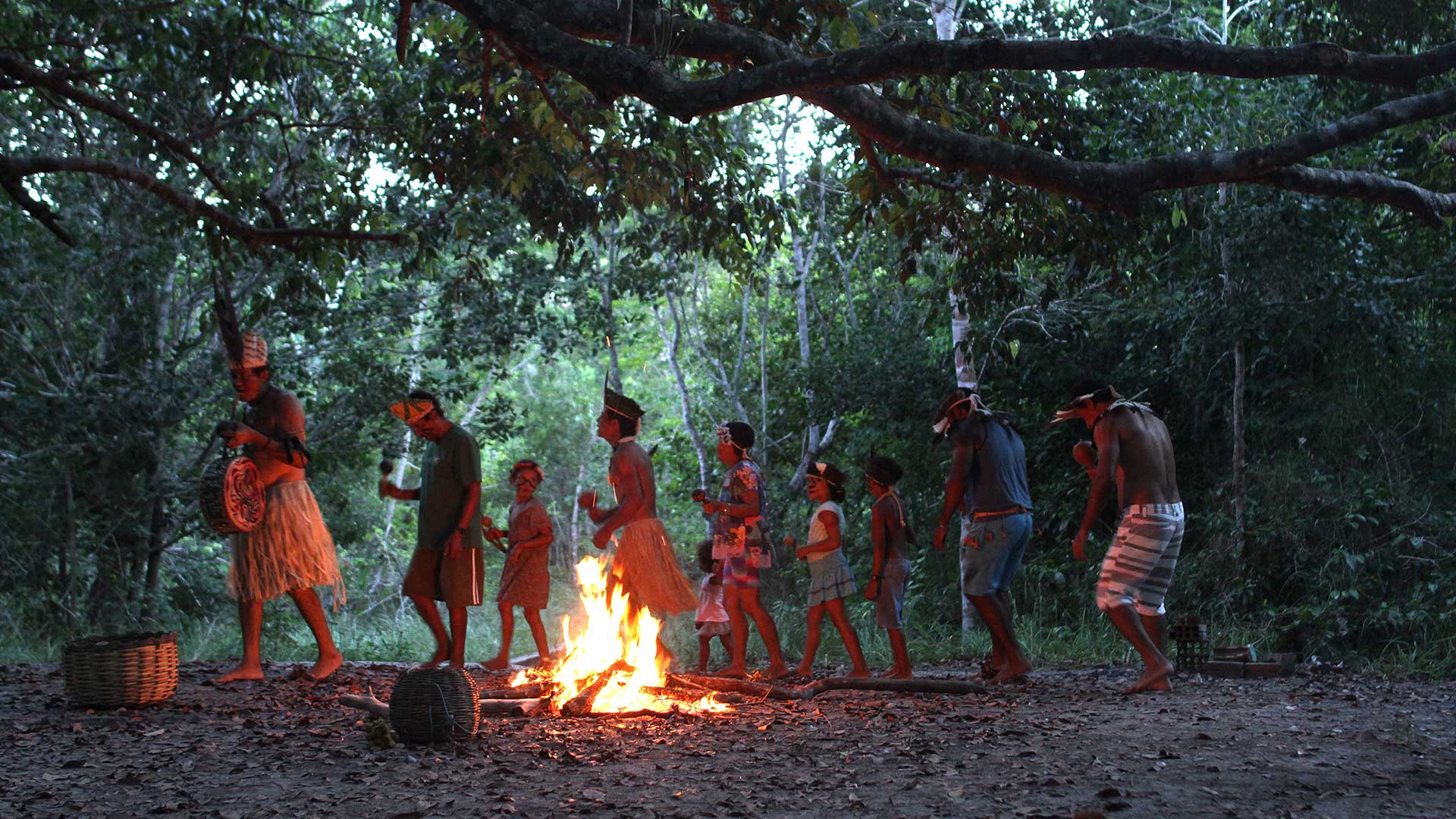
The existence of the Perspektif Program in Festival Film Dokumenter 2021 tries to describe the persistence and resilience of a person or group of people in carrying out work practices that may depart from a personal foundation which we can then read to understand larger structural issues.
Through My Father, Dr. G (Hidayah Hisham, 2020) we can see the layers between a child's struggle to support his father, and a father who practices medicinal cannabis plants and has been sentenced to death by the applicable law in Malaysia. His son continues to try to negotiate for his father to be released from the sentence.
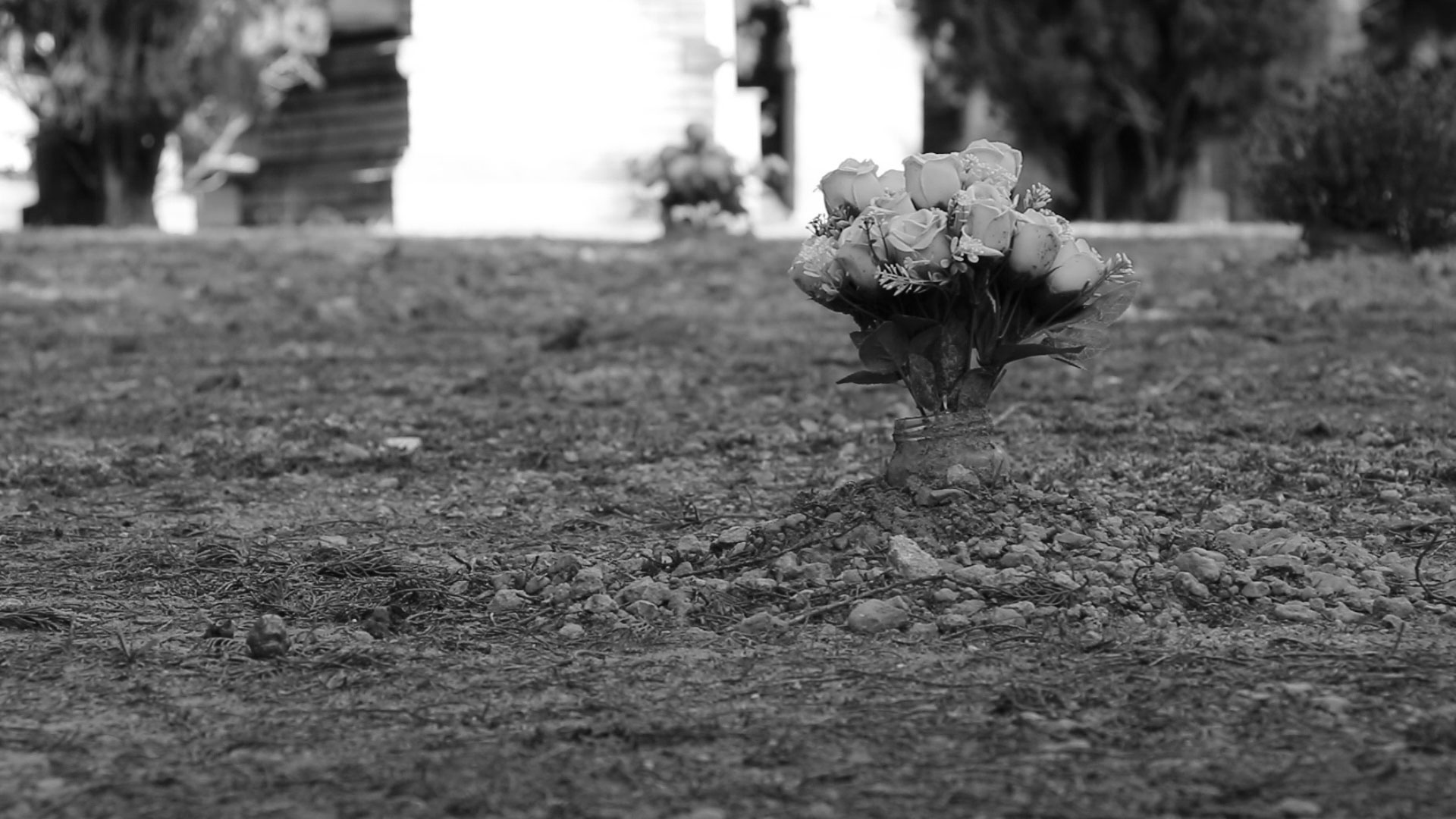
The Traditional Brazilian Family KATU (Rodrigo Sena, 2020) tells how identity in indigenous communities is confirmed through photo documentation as memory artifacts. Twelve youths were interviewed by the newspaper and talked about the struggle to recognize their community's true roots. Eight years later, the team returns to Catu in search of these protagonists, now adults, to learn about their personal trajectories and to approach the daily lives and worldviews of their inhabitants.
The Voice Remains (2021, Laura Pérez Gómez) tells a story about the work of reconciliation in the domestic sphere. A Mandolin in Exile (2020, Rafiqul Anowar) presents forms of work outside the economic framework to survive and strengthen the collective spirit through musical presentations.
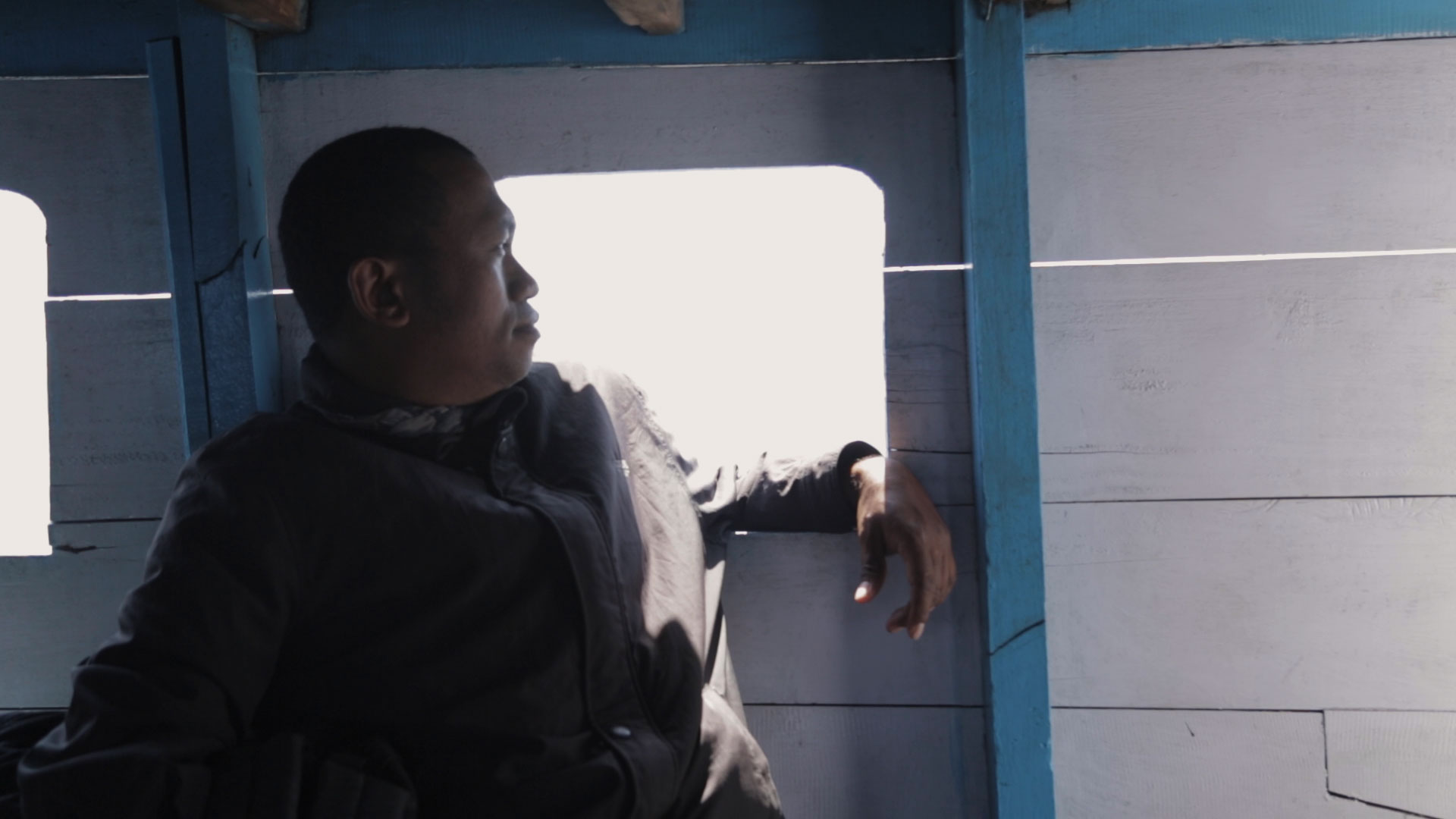
Between Fire and Water (2020, Viviana Gomez) presents the issue of personal identity that must be negotiated within an indigenous community. Dan Ketika Tunas Itu Tumbuh (2020, Kurnia Yudha) presents how the events of 'disappearance' of cultural symbols that occurred in the past become memories as well as new enthusiasm to strengthen their identity through communal activities or activities in the form of festivals.
The six films in this program represent the objectives of the Perspektif Program, namely raising the issue of persistence and resilience. The programmers, Alwan Brilian and Irfan Darajat, believe that until this moment, apart from the emotional and energy issues that are always sacrificed and risked, there are still forms of work that are believed by both individuals and the community as an effort to defend something they love, although far from the framework of capitalism.
Mental health is achieved once human satifsy his needs to feel happy. Humans attempt various ways i search of happiness: doing their favorite activities, spreading positivity quotes on social media, as well as creating memoirs about self-achievement. Happiness is seen as something that is not given but rather earned.
One's happiness will emerge when they establish a feeling of security and peacefulness. Achieving those states of mind could be challenging, due to human's nature as a multidimensional being. Humans are multidimensional creatures bound to several roles at once. They are obliged to present themselves as social creatures, spiritual creatures, civilized and cultured beings and are assigned to many other roles; humans are creatures that bear a long list of responsibilities. This is how they adapt to the environment, by succumbing to the force that requires them to play roles.
Besides acting as a method of achieving happiness, adaptation comes as a pressure that constrains humans. For instance, since the day they are born, humans live in a group called family. In the smallest unit where identity and role are assigned for the first time, humans are required to run in a system equipped with a certain set of rules. This system regulates the roles and attitudes of each member. This institution tends to curb one's perspective about something good, which sometimes creates a clash that affects one's mental condition.
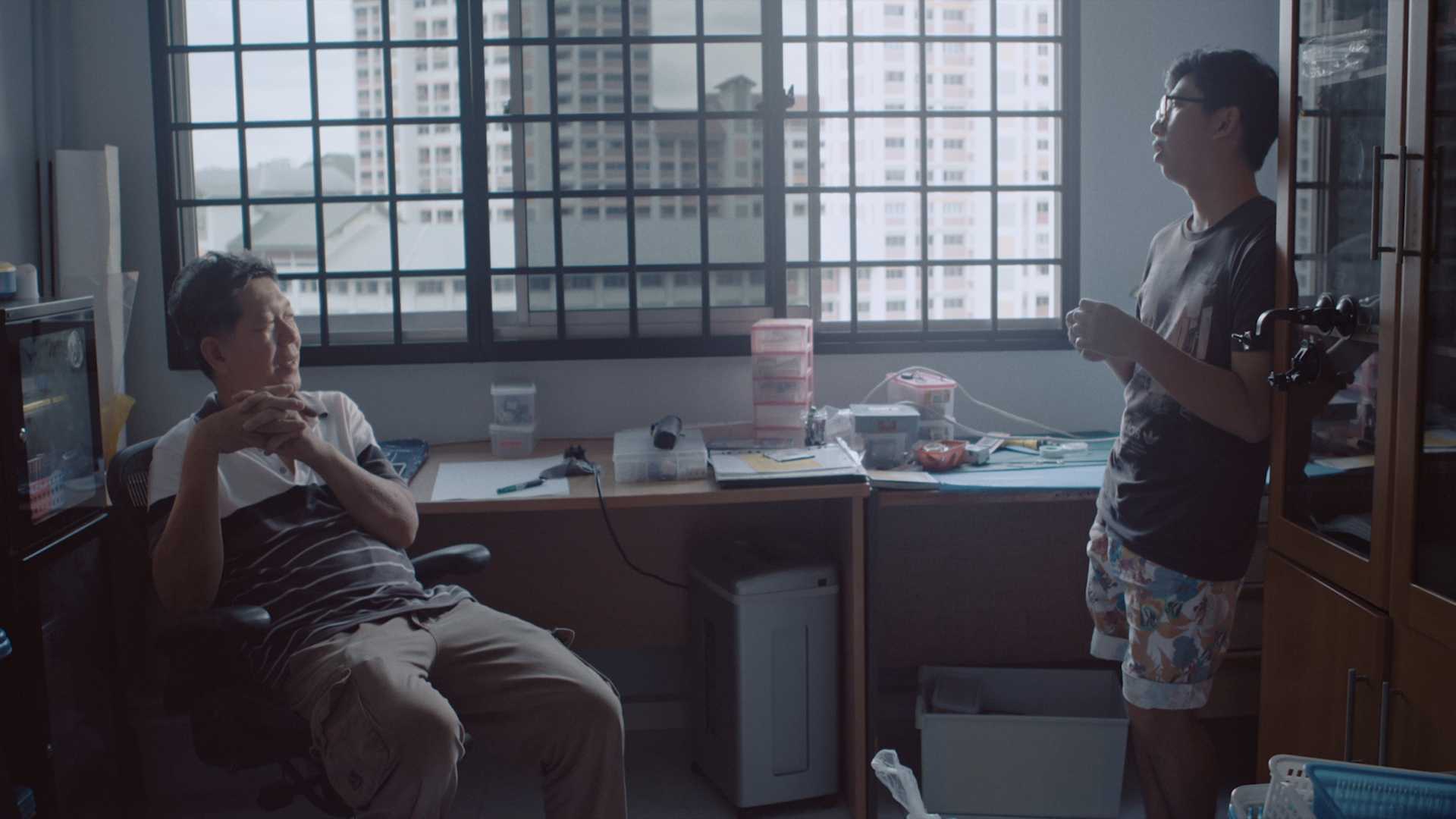
This system that applies in small groups is related to the larger system. For example, Act No. 10 of 1992 regulates the definition and the prerequisites for the formation of groups i.e., family. This act requires the citizens to have the roles and identities mentioned, before forming groups. This is an epitome of a system that govern individuals up until their personal territory. The presence of a structured system needs to be reexamined. In practice, it is not human's conflict that is pacified, but rather the power that impacts on mental health is increased.
Society tends to give bigger space to accommodate those who need to escape from mental pressures resulted from such a situation Spaces that are built independently or in collaboration, help the community in finding the happiness they are looking for. They built a method for the system to be utilized (read: played) to turn pressures into a means of achieving happiness. This attitude shows that people no longer see mental health issues as a form of insanity. But rather as the impact of the power that is present with the system in all human relations. Both personal and communal relations – the work-life, neighbors and citizens.
In 2019, Perspektif program of Festival Film Dokumenter seeks to examine mental health issues outside the mainstream (medical) narrative. This program discusses various responses to mental health problems that can influence changes in system, paradigms, definition and even views of mental health issues itself.
Good Neighbors (Stella van Voorst van Beest, 2018) redefines group life in an individualistic environment, through the events of the subject in remembering the past and meeting with new people. Records showing the activities of the subject, revealing the principle of role, identity and territory about the group. This film pictures that family is not only built on blood relations, but also the relationships that are strived. The principles of family are discussed more deeply through Love Talk (Shen Ko-shang, 2017). This film shows that a family can be built based on accidental meeting that is far from the big ideas about love and religion. Family depictions shown by these two films come as a pleasant space that protects people from deep trauma.

On the other hand, all forms of trauma that are emerged from roles and identities in the family institution, are sought to be detached by subjects of Turning 18 (Hao Chao-ti, 2018). This film shows how the happiness of two subjects needs to be endeavored because they were born in miserable conditions. They inherited problems that would not have been obtained if their presence was in the highest social class. Social class that has free will.
Personal efforts to achieve happiness are also shown through Anxiety of Concrete (Yunmi Jang, 2017). This film shows a memory that tries to be conveyed as pleasant as possible while at the same time pictures the threat of living space. The inequal depiction is presented in 48 Years: Silent Dictators (Sunairi Hiroshi, 2018), of the past traumas that comes back and comes back as a pleasant image. These fragments reignite object's memories of putting up a fight against the larger system.
In China Man (Jerrell Chow, 2019), the effort to achieve happiness clashes against an environment that differentiates humans based on racial identity, about native or non-native bloodlines. This film shows Ek Kiat's efforts to liberate himself from the racial treatments he faced. Frictions with the environment are also shown in Village of Swimming Cows (Katarzyna Trzaska, 2018). This film shows a form of resistance towards the modern system that runs in an area. However, question arises. Is the lifestyle chosen by this group of people, coexisting harmoniously with nature, truly a method of achieving happiness?
All seven films listed above represent the vision of the Perspektif program of Festival Film Dokumenter, to discuss mental health issues from a non-medical approach. These seven films can be enjoyed at the festival on December 1st-7th, 2019. For the complete agenda of FFD 2019, you can check our festival schedule.
In this year's installment of Festival Film Dokumenter, Docs Docs: Short! gives the spotlight to short documentaries in particular. Medium and impression subjects become unique variables to be explored in search of the short documentaries' bargaining position as a fertile ground for innovation. The supposedly novelty of these concepts demands a redefinition of experimental documentaries, which melts boundaries among short, experimental, and video art documentaries. However, before talking about the medium and impression at play in short documentaries, one might benefit from discovering the framework of this form novelty that is so closely entangled with them.
According to Gotot Prakosa's report to Jakarta Council of Arts in 1982, film used to be put into one of two boxes: fiction and nonfiction. Documentary belonged to nonfiction, together with video and home movies. Documentaries used to be nothing than videos appropriated for government institutions and other organizations. Even so, through the course of time, the technology advancement gave birth to new films that broke those standards, among many others, in terms of style and duration. This condition perpetuated until several groups emerged to embrace certain ideas. There came, for instances, Sinema Delapan that experimented with 8mm camera and Forum Film Pendek that began to unravel the essence of short films.

Experimentation-rich works came one after another, encouraging Forum Film Pendek to declare the existence of short films as a model and alternative driven not by commercial orientation. Furthermore, the forum defined these works of film to represent the attitude of their filmmakers as a whole, and not made for commercial theatres. This group, according to the forum, included short story films, home movies, experimentals, animated films, documentaries, and other forms adhering to the aforementioned concepts.
From history, we know that the development of technology, screening room classification, and awareness of its distinct impression further develops the notion that short films are a space to accommodate the newness of forms. Documentaries, too, exist to achieve different impression than that of mainstream works. This achievement refers to the filmmakers' perspective and knowledge manifested in the game of aesthetics—medium—in order to build impression. The medium in documentaries points to the verified data processing method. The element of data processing leads to the ramification of documentary as a genre or a method.

As a genre, documentary refers to the concept of displaying events in a manner that is factual, non-scripted, and free of the filmmakers' interpretation. Documentaries can be identified through certain styles, approaches, structures, and forms, or like Bill Nichols posited, through expository, observational, interactive, reflective, and performative storytelling styles. Narrative/essay approach, or a three-act/five-act structure might also fit into this concept. Interpretation and manipulation can exist in the realm of method while reality lies in the form of verified figures and data. In this medium, documentary is often deemed as a work of experimentation and video art.
This leaves us two questions to answer. Firstly, are the filmmakers' perspective and knowledge in line with the tinkering of medium and achievement of impression? Secondly, are these perceptions accurate to visualize the information from the data gathered? The answers to these two questions further create the film contexts, ones born out of intertwining of medium, knowledge, and impression. The whole package that leaves no shallow exaggeration in short film medium.
The two mentioned issues are going to frame our understanding of eight films featured in this program. Fish (Filip Bojarski, 2019) features the story of a catfish capture while being contrasted with a poem by Tadeusz R ó źewicz. Filip's recurring interpretation in a 4:3 ratio puts the audience as a distant observer.

Similarly, Introducing to Imamura Shohei (Byung Ki Lee, 2019) manipulates the audience's impression using an interpretation of film footages by Imamura Shohei and Ozu, voice over, as well as image juxtaposition. The filmmaker's obsession directs the audience to find the meaning of home and complementing elements in Shohei and Ozu's films.
Just like the title suggests, On Thai Women : They are weak, that's why they dream of weak women (Rosalia Engchuan, 2017) presents the filmmaker's perspective on Thai women. They represent the outsider's view as well as the audience's about the phenomena happening in Thailand. Putting the audience in a special place is also observed in Distancing (Miko Revereza, 2019). It talks about literal distance to illustrate an abstract one, both conveyed through a montage and images composed in such a way. The Missing Scene From Petrus (Arief Budiman, 2019) talks about distance as well, though in a different manner. Audio-visual materials are employed to signify the distance of historical reality as if it is subject to blurriness and engineering.
Origin of Shadow (Shuhei Hatano, 2017) shows how undelivered letters and unrequited yearning linger and lurk over many corners of a city. A series of montage displayed in such a way to elicit the audience's empathy over encounter and farewell. Likewise, The Summer of Arte (Takayuki Yoshida, 2018) watches the visible corners of a city. Angle and composition techniques are employed to feature spots of a park attractively. Katsuo Boshi (Yu Nakajima, 2015), on the other hand, displays the making of katsuo boshi, an essential ingredient in Japanese cuisine. The journey of the fish in the montage presents a context of Japan and the industries within.
These films can be enjoyed throughout the festival on December 1st to 7th, 2019. See FFD 2019's complete agenda
Canada has one of the prestigious film events for filmmakers around the world, the Toronto International Film Festival. What people might not know, is that at the beginning of their cinema growth, they were confronted with various issues, this included the development of documentaries.
Piers Handling and Jerry White said that documentary growth in Canada could not be separated from the development of the National Film Board (NFB), an institution that was made on May 2nd, 1939. Their presence emerged as a pioneer in the development of almost all forms of films, including documentaries, animation, up to features. The initial development was merely a promotional tool. One in the highlights is a film called Living Canada , designed to persuade people in the United Kingdom to migrate to Canada.
In addition, Canadian documentaries found their significance in the First World War era. Not only physical war, they also brought discourse war along into the arena. The NFB that existed under John Grierson, further promote the growth of documentary. It transformed into a medium to spread information, like Canada Carries On and The World in Action, that has transformed into propaganda tools and reached millions of viewers. After the war, Canadian documentary–which was still widely initiated by NFB–became another form of record about ethnic groups, indigenous people, and social problems that exists in Canada.
The themes of documentaries that particularly emerged after the world war, is not necessarily a whole new thing. Its development was only rife after the war abated, but the seeds can already be traced since 1914.
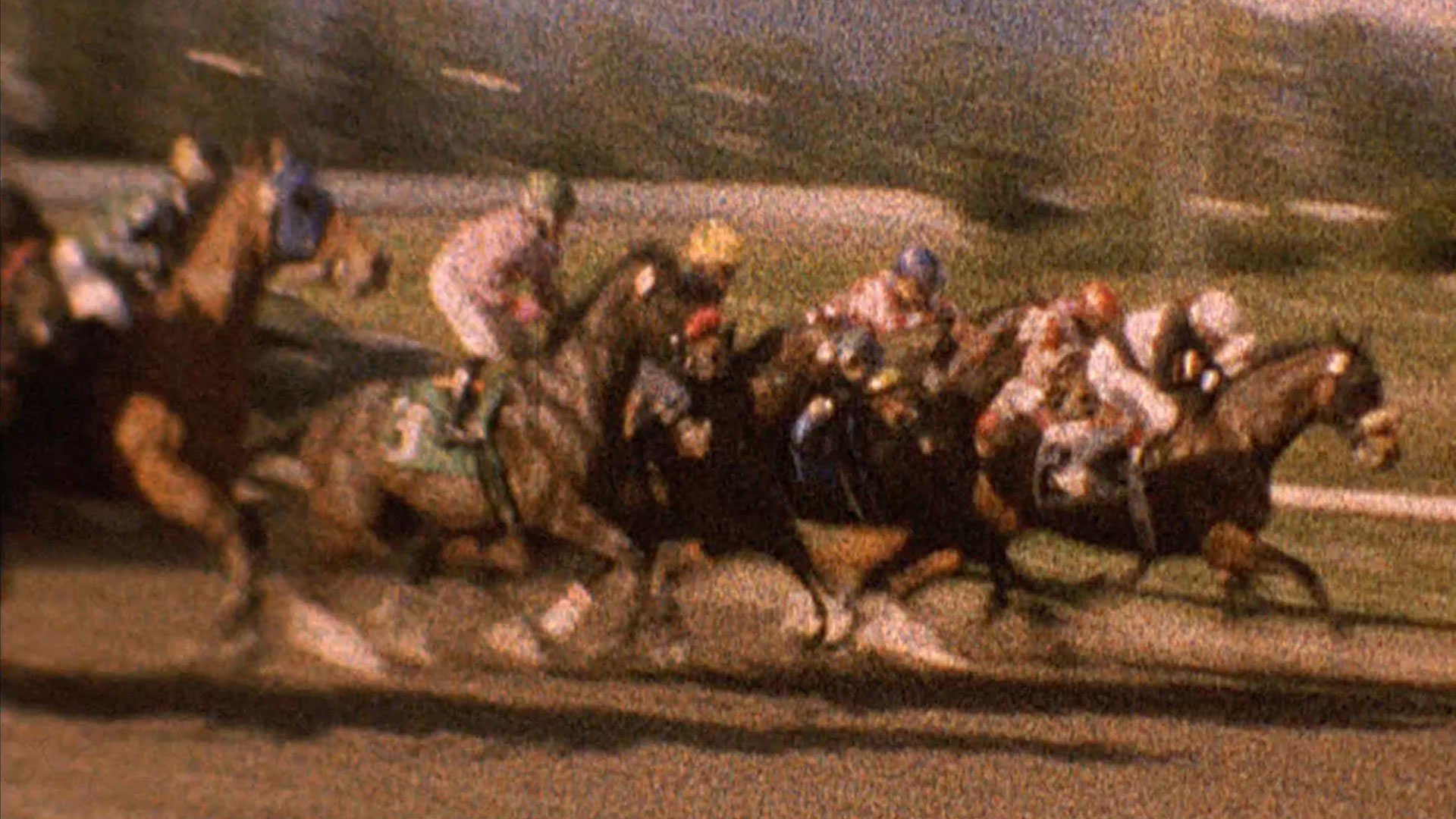
That year, anthropologist Edward S. Curtis directed In the Land of the Head Hunters with the Kwakiutl people in Birtish Columbia, Canada's westernmost province. Aside from presenting a fairly close perspective on the Kwakiutl people, this film has become a significant milestone regarding the existence of documentaries from Canada's west coast. This is because the claim of this film being based on documentary principles prevailing at that time.
In addition, this film was also one of the films that openly showed British Columbia as a province that is a part of Canada's west coast. Something that is no longer visible in the west coast film productions thereafter.
Even the marginalization of Canada can also be seen from the British Columbia's stance. The province is one of Canadian cinema production bases, that is not inferior to other places such as Toronto or Montreal. Tax incentives that lure filmmakers was the reason that could certainly cut production costs. Nevertheless, there were regrettable things that stick out from these conditions. Very rarely did a film project feature panoramas like the exotic and coastal forests of British Columbia as the area itself. Instead the urban and rural spaces are often offered as stand-ins for American locales.

This year, Festival Film Dokumenter (FFD) tries to reintroduce how the actual panorama of one area is often the object of exploitation in a cinematic presentation. Focus on Canada: Pacific Standard Time brings together historical and contemporary motion pictures from the filmmakers and artists from British Columbia. Each of their pieces answers questions about the different cinematic temporalities and geographical characteristics of the Canadian west coast.
This time, Focus on Canada will present seven films. It begins with a countdown from Opening Day (Zoe Kirk-Gushowaty, 2016) which captures the thrill of the Hastings runway in Vancouver; the filming is interesting because it relies solely on one Super 8 film roll.
Other filmmakers utilize a single roll of film as a point of departure for their investigations. Whether it's the duration of the captivating one take shot in Einst (Jessica Johnson, 2016). Or Chris Gallagher's Seeing in the Rain (1981), whose documentation of a drizzly bus ride down Vancouver's Granville Street is shuffled and edited together into a hypnotic play of starts and stops.
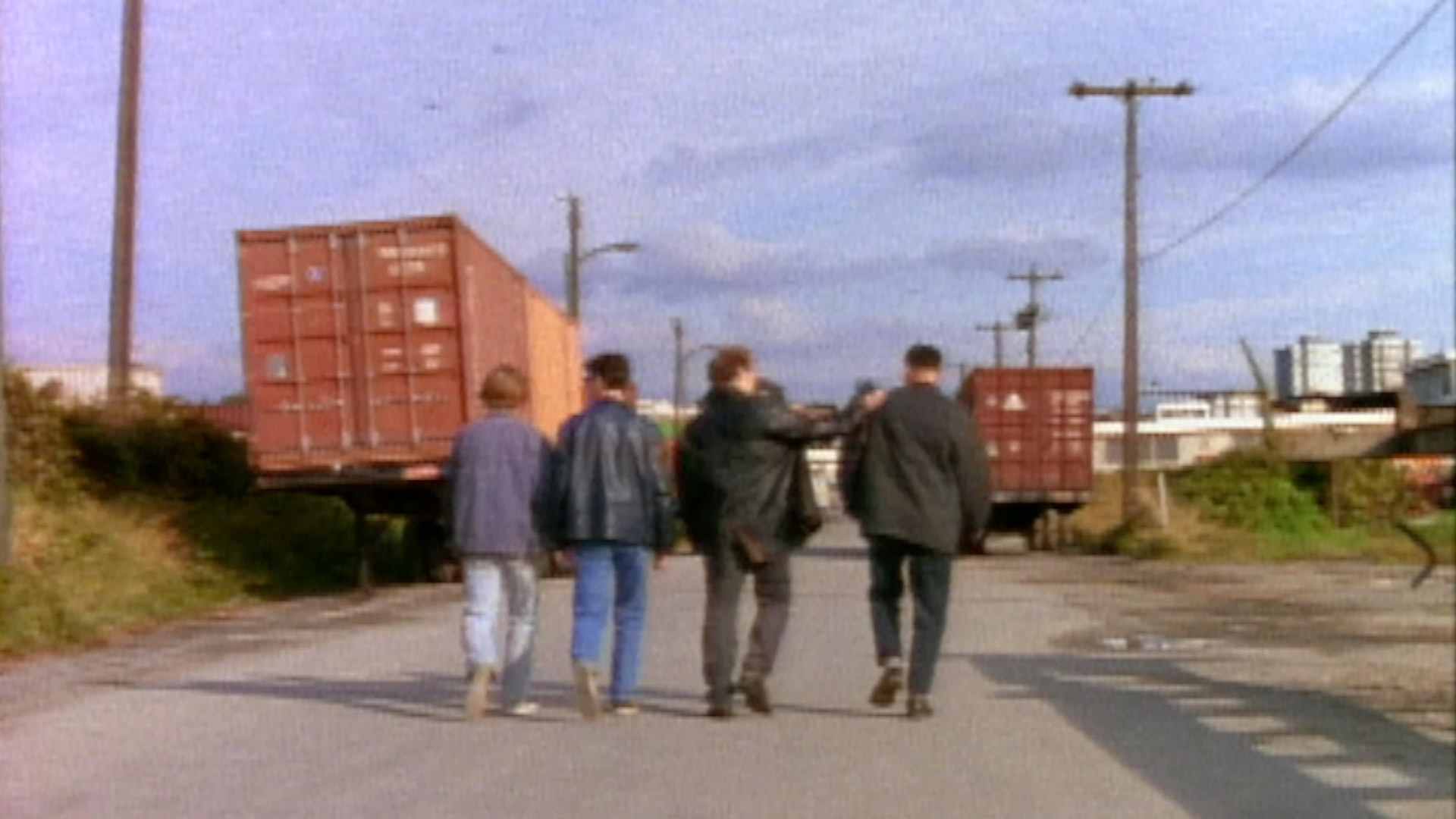
In other screenings, the time and place overlap in the work of Canadian Pacific II (David Rimmer, 1975) who compiled clips recording trains, mountains, and the Port of Vancouver. While Eclipse (Peter Lipkis, 1979) as the name suggests, presents an eclipse that is seen directly from inside a hotel room, along with its coverage on television.
Finally, the program includes pieces by video artists that take inspiration from the short and the long. Produced according to TV exhibition standards and broadcast locally amidst traditional advertisements, Stan Douglas' Television Spots (1991) offer mysterious hints of narratives in 15 and 30 second fragments. As well as the exploration of T.W.U. Tel (Amelia Produtions, 1981) documented the five-day occupation of British Columbia's major telephone centres by its workers union.
Focus on Canada: Pacific Standard Time can be enjoyed at FFD 2019 on December 2nd-7th, 2019. Please see our festival schedule for the full agenda of FFD 2019.
In 2016, a video displaying a group of students of SMA Negeri 3 Solo who protested their school went viral. Dermawan Bakri, the student council president of SMA Negeri 3 Solo at that time, organized a protest together with his friends. It started with a 2.5 million rupiahs deduction of their student activity funds, which should have been 12.5 million rupiah in total. When he asked the vice principal where the 2.5 million money had gone, Derma did not get a satisfying answer. Though the cut eventually went down to 500 thousand rupiahs, they still didn't get the answer about where the money had gone.
Derma and his friends' last straw was when the 2006/2007 school budget declared a total of 218 million rupiahs for student expense. In reality, they estimated it to be merely 45 million.
The allegation of fund misappropriation in SMA Negeri 3 Solo was nothing new. The previous generation before Derma had attempted to sue the school, but they were threatened to repress their intention. Derma and his friends learned from the failure of their predecessors' resistance; they adopted new ways. Like a clandestine operation, the student council led by Derma formed a stealth team called SOS (Save Our School) consisting of informant, evidence collectors, publishers, and mass media relation. They carefully recruited the students who had been vetted to not have any relationships with their teachers.
A large protest was secretly in motion without any of the teachers or other students involved, until that day came. A crowd of students demonstrated in the school hall, attended by their teachers. They demaned teachers to meet them and reveal the financial audit transparently. This incident shocked the Solo education society at large.
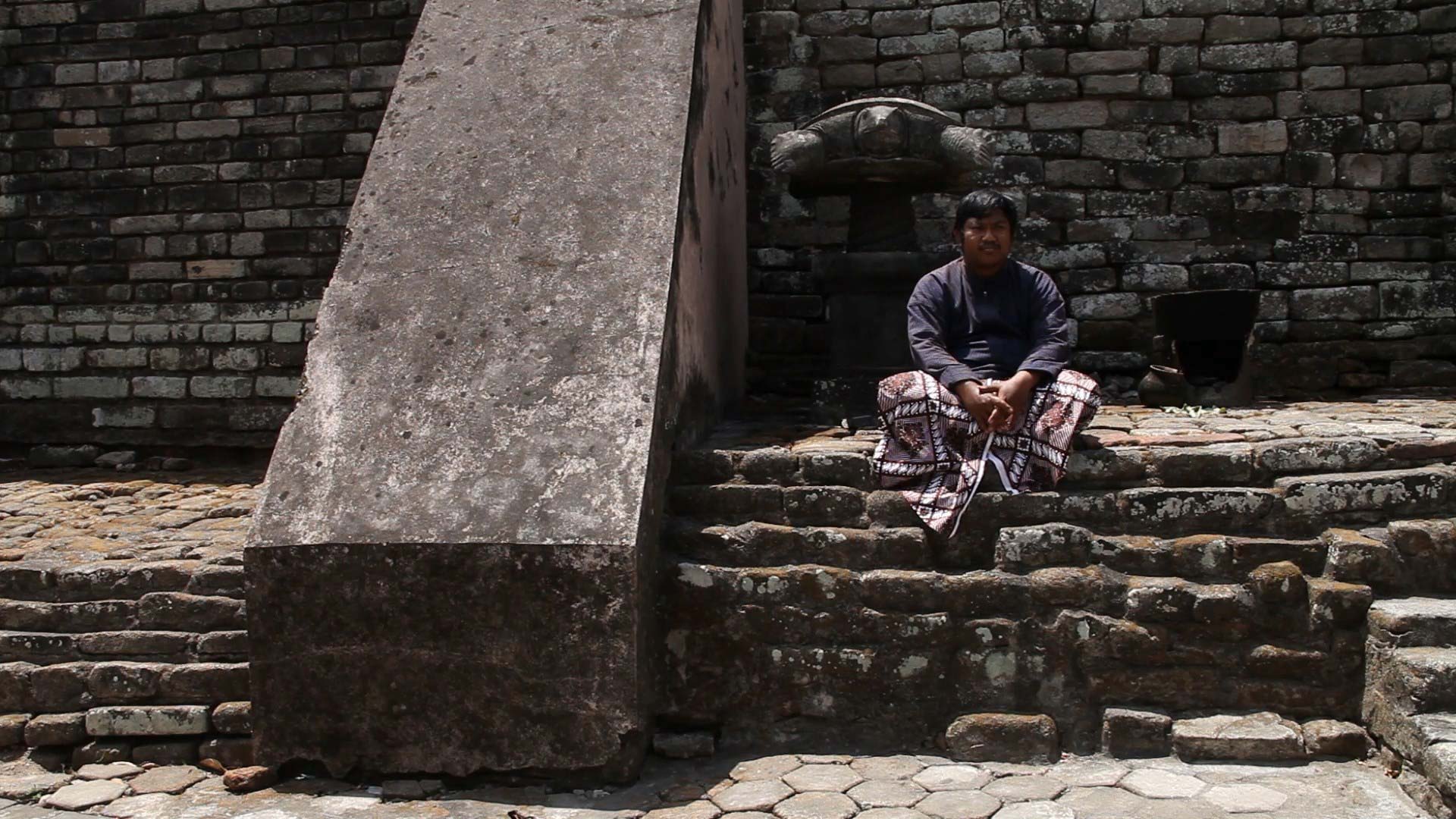
The movement of SMA Negeri 3 Solo students captured in the 11-minute-long video was none other than the short documentary film titled Sekolah Kami, Hidup Kami (Our School, Our Live) made by Steve Pillar Setiabudi. Although it was uploaded and went trending in 2016, Steve produced the film in 2008, in commemoration of 10th anniversary of the end of the New Order regime.
Critical attitude and skeptical about the surrounding situations exist among high school students. If activism and demonstration are usually attached to college students, students of SMA Negeri 3 Solo proved that they do not need to wait to be a college student to do something. The documentary film then becomes a medium to convey the message reaching a wider audience.
Now, the roles of students and teenagers cannot be seen only as media consumers. The developments of media technology have enabled students to occupy the roles of producers, distributors, and consumers. FFD 2019 again presents a student documentary film competition through the SchoolDoc program.
Became an annual agenda since 2005, SchoolDoc was arranged to improve the ability of film appreciation among the students. This program was triggered by the phenomenon of creating media as the fourth educational system after family, school, and community (environment). Nonetheless, this demand is not necessarily complemented with the real effort of media literacy. The film, especially documentaries, become one of the media implementations that can play a significant role in providing alternative educational references.
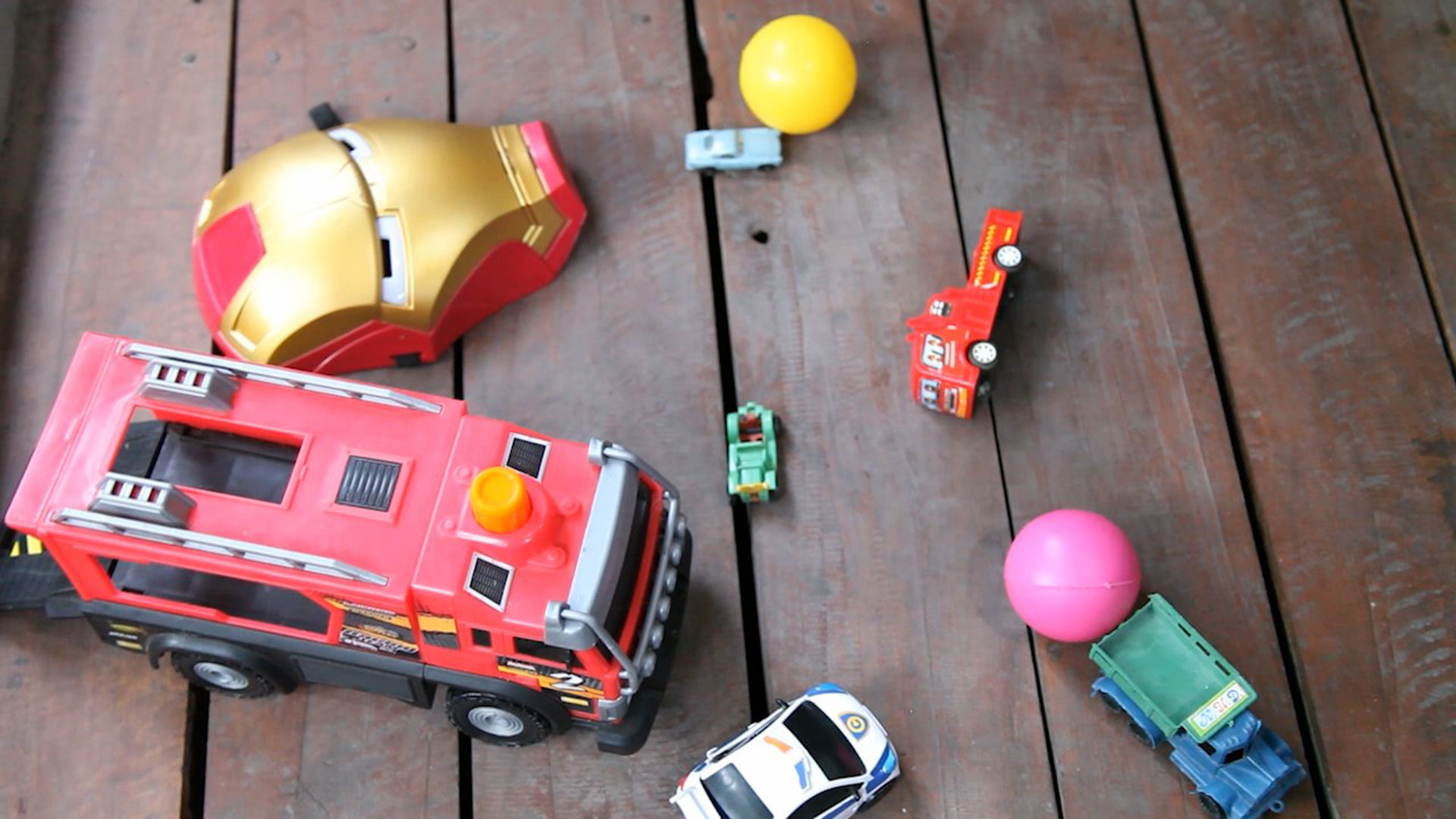
Through Forum Film Dokumenter, SchoolDoc program developed in the form of documentary production workshop for high school or secondary school students. This year's theme is Tracing Roots, Recording Origins: Self Portrait . This year's SchoolDoc program mentored by Jean-Paul Labro and Lyn Nékorimaté, instructors of video, cinema, and performance arts from DING Collective, who have been working in various related projects.
During the production period from 4th to 10th of September 2019, SchoolDoc followed the journey of the participants in re-questioning what they considered as important things in their lives, what defined them: desires, aim, and questions sought answers. Developed from the reflections on family, personal historical manifestations that shape identities were sought and revealed.
Five short documentary films produced by five students; Janma Dumunung (Thera Karunia, 2019) tells the story of a young man who is looking for a reason to not leave his village, which is slowly crowded with foreigners. Many of his friends and neighbors left already. In his search, the young man finds his reason to stay from the most unexpected source. Perjalanan (Nickho Darmawan, 2019) tells the story of a young man who has finished his studies and been considering marriage. In a café, he writes about his life. His memories bring him to the past, where he had met both sorrow and bliss.
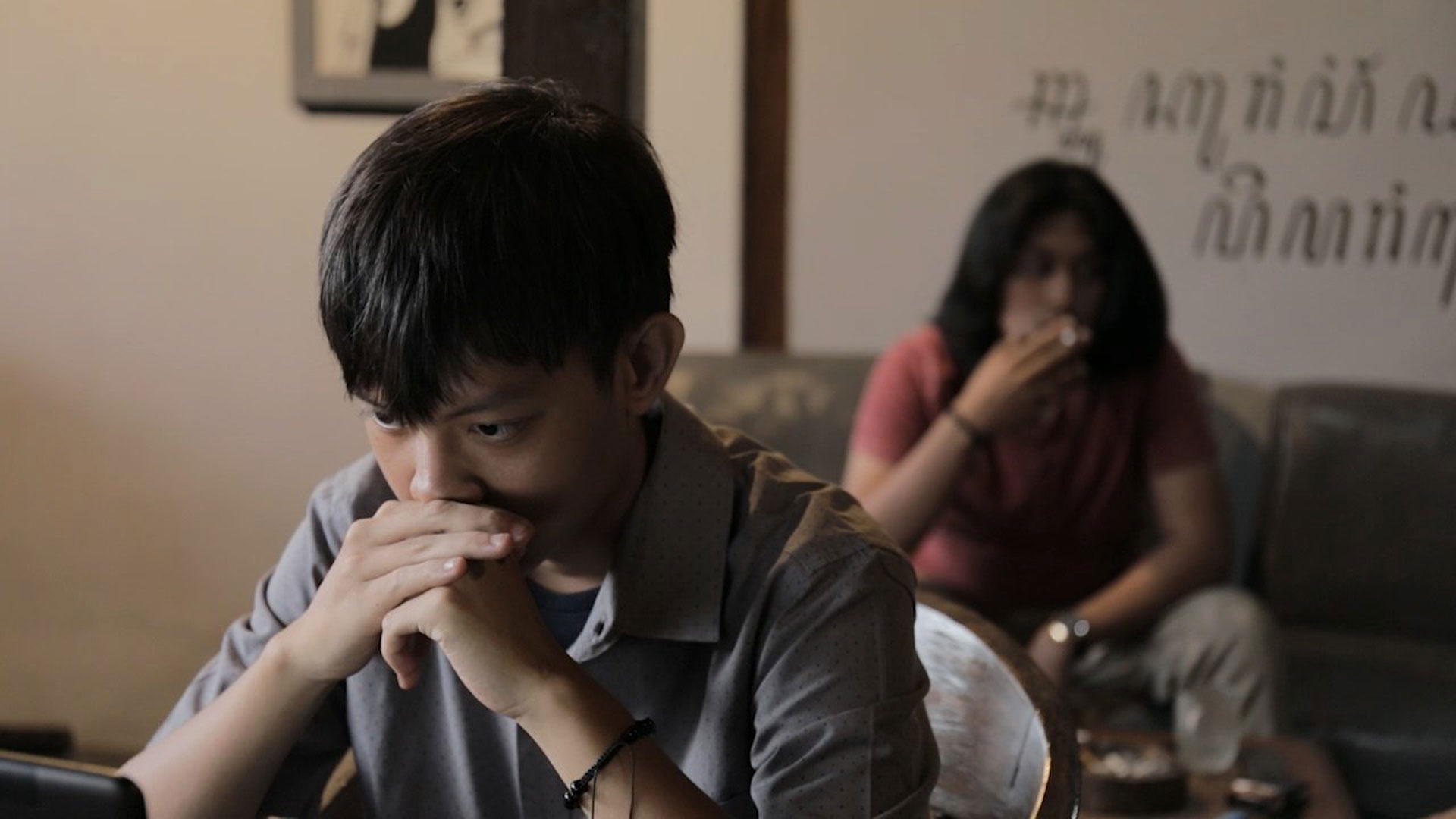
Sepi (Muhammad Nazim Pradipa Syah, 2019) shows a teenager plagued by loneliness. He feels his family doesn't care about him. In a contemplation, he recognizes things that slowly change his perspective towards his family. Merelakan adalah Bagian dari Kebahagiaan (Alhanz Sofyan David Alvarobin, 2019) tells the story of a teenage boy who feels his parents are lacking in attention to him after the birth of his little brother. He has not realized yet how big his parents' love for him and tries to write his story. When he finally grasps the truth, he finishes his story.
Sacred Heart (Gyanrahma Indrajid Sofwan, 2019) questions whether religion is important if it's nothing but a label. This question follows the main character. The essence of the existence of the divine is for humans to connect with their sacred hearts. Humans―not all of them, of course―are frequently trapped in religious practices as a formality, seeing it as an obligation. However, it is crucial to ponder the essence of the idea so that we act by listening to our hearts.
Besides screening films made by students, SchoolDoc also displays exhibitions containing behind-the-scene recording of the process and the story behind the making of the works as a whole that forms a documentary reading titled The Projections of Five. This recording of the 2019 SchoolDoc program, a collaboration between Forum Film Dokumenter (Documentary Film Forum) and DING Collective, itself was given the title Rekam.SchoolDoc.01, a 35-minute film edited by George C. Ferns.
SchoolDoc: Tracing Roots, Recording Origins: Self Portrait can be enjoyed at Societet Militair Lobby, Taman Budaya Yogyakarta on December 1st-7th, 2019.
The habit of constantly questioning something that's right in front of us needs to be developed in order to hone critical attitudes, including towards cultural products like movies. As a work of human beings that is always produced, reproduced, and criticized, movies don't appear just like that. Borrowing a part of Seno Gumira Ajidarma's latest speech, titled "Culture in A Toothpick's Package", culture is a battleground of ideologies—and ideology is the perspective and methods used by certain parties that have their own intentions.
That is how a discussion program becomes relevant in movie festivals . The main goal is not to explain the messages the audience fails to comprehend. Without aiming to build a utopian position as the motion director for movie insights, the discussion program is held as an attempt to reach new dimensions and discourses. A series of discussion programs are included in Festival Film Dokumenter (FFD) 2019 through the DocTalk and Public Lecture program.
Issues that are brought up in these discussions are subtracted from various concerns. The discussions will not to try and conclude it in one single narration, but they will expand the possibility of producing movie insights. There are at least three main concerns that will be shared. All three will bring together our jumbled movie insights.

The first main concern is about movies, the country, and the market. The discussion of this intersection—of movies with the country and market—becomes relevant when a movie is viewed as a cultural product that cannot be separated from social and political contexts. This discussion is actually very diverse. One of the topics would be short movies' position, especially documentaries, in taking notes and becoming the representation for democratic participation.
Nevertheless, to be able to fulfill that in reality, movies have to go face-to-face with censorship. The censor form can vary and come from anywhere, like state institutions, military, certain communities, and personal self-censors. In other words, the existence of short movies as an independent medium and how they face censorship will always be linked to the act of democracy.
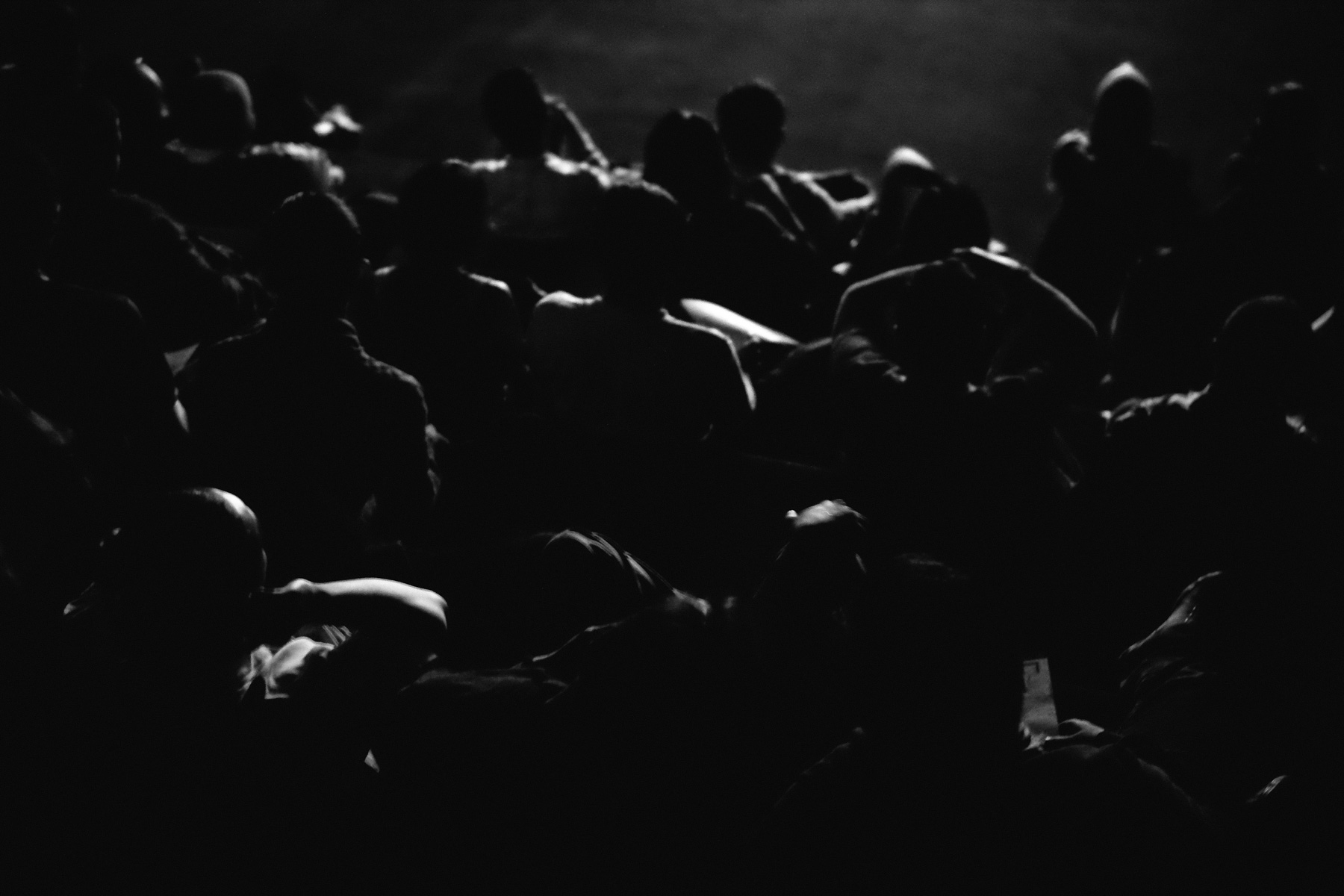
Besides the social and political context, another thing that cannot be dismissed is how Indonesia's cinematic development always intersects with the economy. For this one matter, it is important to look back at how, in the past decade, numerous funding forums and movie markets started to grow in Indonesia, South-East Asia, and even Asia.
That issue gives impacts to the production pattern that has become more diverse. The funding also influences the aesthetics and narration in a movie. Philip Cheah, founder of pop culture magazine from BigO Singapore, in Jogja-Netpac Asian Film Festival 2014, stated that funding motives indirectly create new clichés, especially in independent cinemas. "Slow-paced rhythm, long meaningful shots, and absurd but poetic moments," said Philip as a metaphor easily found in Indonesian movies that made it to international movie festivals and earned funds out of it.
Based on that entire bundle, appeared questions about how funding can create impacts on the process of movie production and distribution. However, funding forum also has its own logic. As an apparatus that brings together social problems and a wider public, then how far can a funded movie negotiate with certain donors and institutions?
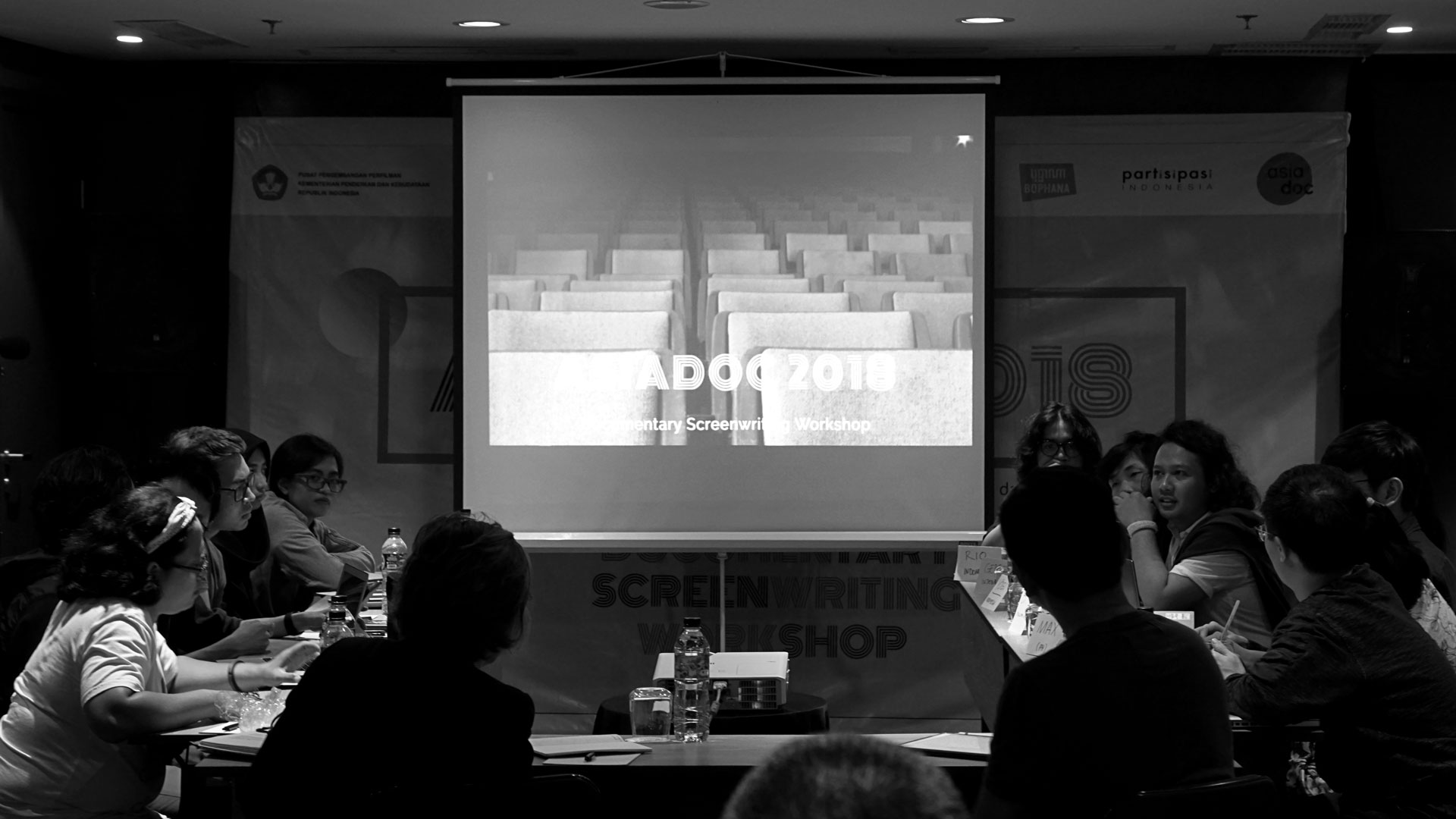
The second concern is about movies and social changes. When discussing that issue, we can see it from two different perspectives: how a movie can encourage social change—although it sounds too grandiose—and how a movie is positioned in the midst of the dynamic social conditions.
On the first perspective, Tapan Bose, an Indian filmmaker said, "Any documentary worth its name is never neutral and non-controversial. If it is to serve as a positive catalyst for social change, it must shock, inspire, and provoke." Even if it's heroic, the conditions faced by filmmakers, documentary movies in particular, turn out to be quite complicated.
In order to be a documentary movie that can shock, inspire, and provoke, intimacy becomes the aspect that's believed to be the measurement. Intimacy is the condition where alienism between the documentary subject and the filmmaker can be overcome.
This isn't as easy as it sounds because for main documentary subjects (person/public/community), formerly normal daily activities suddenly have to face the camera and the sound recorder. For the filmmakers, the gap can be felt because they may not be close enough with the subjects from whom the issue is brought up. This issue often clashes with ethical matter. For the sake of a movie strength that can gain intimacy, a filmmaker may lead the movie into an exploitative behaviour.

On the other hand, the second perspective is about how a movie is positioned in the midst of a dynamic social condition. Thomas Barker is one of the few scholars who wrote down Indonesia's cinematic history in that frame through his book, Indonesian Cinema after the New Order: Going Mainstream , a systematic and comprehensive report.
For Barker, cases that happened in Indonesia are unique. One of which is how cinemas in Indonesia fulfilled the hijrah movement's demands that are arising at the moment. At the same time, mainstream means working together with the Tourism and Creative Economy Ministry, built in 2011.
Instead of becoming a smooth creative world as many people had hoped, the Indonesian movie industry is currently heading towards very different challenges if compared to those before 1998. Barker sees that this industry is like a microcosmic for Indonesia: democratic but weighed down by authoritarian legacy, creative but is facing cultural dispute, international despite being domestically made.

The third concern is about how a movie carries burdens in insight producing discussions. FFD recognizes how movies these days deliver insights in an explorative form. One example is entity, called as an ethnographic documentary. In certain cases, this entity may discover various functions. Nevertheless, this entity is also the middle ground for discourses of preferences, empirical experiences, and ethical responsibilities in making documentary movies.
The link between movies and insight producing isn't always placed at its contents. It can also be referred to the form, like how documentary movies and art videos are recently talked about. At the same time, the meaning between both creations is exchanged. Despite having the same audio-visual element, the distinction can be found in more detailed meanings, including in the space where both cultural products are presented. If movies end up in movie festivals or cinemas, art videos are often presented at art exhibitions—in a more specific phrase: new media art, multimedia art, and the most common one, contemporary art.
These two similar forms can also open other aesthetic alternatives. Garin Nugroho stated that both of them can deliver the public's opinion in a popular way. Still, there's a potency of making movie aesthetics—that is different than art school's version of aesthetics—possible. Both movies and art videos then become the pen and fighting weapon in the middle of certain socio-political situations. Garin also mentioned that technology transformation gave birth to the acceleration of appreciation and distribution—a rocky process of pushing each other down and an adaptive process of new appreciation and creation methods all at once.

Every mentioned concern is summarized and shared to an open public in the DocTalk dan Public Lecture programs. The DocTalk program will include discussions about Distribution, Market, & Film Politics Economy: " The Faces of Our Film Distribution" ; Intermediality/Over and Cross Modes: " The Maneuver of Mechanical Eyes: Art Video and Documentary Film in Indonesia" ; Film & Democracy: " Short Movies and Desired Democracy" ; and Hacking Methods & Ethics Issue: " Intimacy and Ethics: Universal or Contextual" .
Other than movie-related matters, FFD also designed DocTalk to discuss the attempts needed to be done in order to create a safe and comfortable community for anyone. This issue is set forth from community program limitations that are often so unclear that, at some points, blur out the line differing volunteer work from professional work. This concern is also brought up from how during all this time, FFD can grow as a place not far from the definition of community.
Militancy imaginations that are carried on often remove the fun of volunteering in community work. Sometimes, militancy imaginations even create exploitative work for the sake of reaching the group's main goal. That problem will be shared and discussed in the Assembling in A Safe Place: "Rethinking Forms and Prevention of Violence within Communities" program.

Besides DocTalk, FFD will also hold Public Lecture. This time, there will be two panels brought by Thomas Barker and Kek Huat Lau. Thomas Barker will talk about his research results, which has been published as a book titled Indonesian Cinema after the New Order: Going Mainstream . This book highlights 20 years of change, starting from a simple and independent beginning all the way to following the main stream and earning international recognition. He offers the idea of a three-phase movie industry development: the step of reaching success in a local pop culture, especially by the youth; earning financial security; and, finally, getting the creation to be internationally recognized as an art work.
Meanwhile, Kek Huat Lau will elaborate how he designed and executed The Tree Remembers (2019), an ethnographic documentary about the worst politics and racial harassment victims in Malaysia. As someone who was born in Malaysia and living in Taiwan, Kek will explain how he has empirical and emotional experience of the place, time, and social bond regarding the ethnic problems in his country of birth. This, of course, becomes a consideration in creating the intimate yet ethical movie narration.
These DocTalk and Public Lecture programs is held in the Faculty of Social and Political Sciences of Universitas Gadjah Mada and the Faculty of Visual Art of ISI Yogyakarta, on 2—7 December 2019. Check the festival's schedule to access the full program list of FFD 2019.
Pleasure and happiness are two often interchangeable terms. Pleasure emerges spontaneously in an instant because of external stimuli. Happiness, on the other hand, comes due to intense and prolonged duration of personal connection. Still, the two come from desire, which is insatiable anyway. This means that both pleasure and happiness have to come from demanding, continuous, yet unappeasable external drives.
Can one materialize a personal image and then assembly and manifest it into a cultural construct in the name of collective happiness?
The superstructure, let's say the State, constructs simplified methods to gauge and delineate the desire of its people—their happiness. The State is there to guarantee the living of its citizens that way. No one knows whether it eventually results in self-identitiy talking about origin or a matter of boundaries that compartmentalize human on the basis of superficial paramaters.

Those variables are at play in the clainms of four filmmakers of France—their country of origin. Michel Toseca, in To The Four Winds (2018), exposes the problematic system that borders humanity on the basis of arbitary geographical lines. There is also Merie Losier, who speaks of one's search of validation and inclusion in Cassandro, The Exotico! (2018).
France is introduced as a nation in Laetitia Carton's Le Grand Bal (2018). In the subject of her choosing, Carton shows her favoritism of culture, another dimension of happiness to French people. Culture is yet a set of non-exhaustive issues that originated not only to race, but also the stubbornness of humans themselves..
Far across the ocean, Mickoel Andrianaly invites the audience to unveil the attitude of the citizens of Madagascar, a former French colony, in pursuing happiness. Interestingly, the filmmaker of Nofinofy (2019) illustrates France through the memories of a barber. His recollection of France and vision for Madagascar are gradually unwrapped. Everything comes together in the barbershop.

The four films are screened on Le Mois du Documentaire with Pursuit of Happiness as the topic. Le Mois du Documentaire is essentially a celebration of documentary films observed in France and France institutes of culture worldwide every November. In Yogyakarta, this event is annually celebrated as a collaborative project between Festival Film Dokumenter (FFD) and Institut Français d'Indonésie (IFI) Yogyakarta since 2016.
Le Mois du Documentaire was already held on November 11th-12th, 2019 at Auditorium IFI-LIP Yogyakarta. But, you can rewatchLe Grand Bal (2018) on December 4th, 2019 at 7.00 p.m. at Padepokan Seni Bagong Kussudiardja (PSBK).
laflammearage1951.blogspot.com
Source: https://ffd.or.id/category/program-highlight/?lang=en
0 Response to "Continuity for Film and Television Twu 1998"
Post a Comment